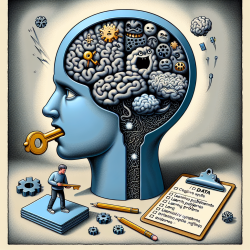Introduction
In the evolving landscape of speech-language pathology, practitioners are increasingly turning to technology to enhance their practice and outcomes. A recent study titled "AI-powered narrative building for facilitating public participation and engagement" offers valuable insights into how artificial intelligence (AI) can be harnessed to improve public engagement. This blog explores how speech-language pathologists can leverage these findings to enhance their practice, particularly in online therapy settings like those provided by TinyEYE.
The Role of AI in Speech-Language Pathology
AI technologies, including algorithms and data analytics, have shown immense potential in various fields, including healthcare and education. In speech-language pathology, AI can be used to analyze speech patterns, track progress, and personalize therapy sessions. The integration of AI into narrative building can further enhance these capabilities by providing a structured approach to engage with clients and stakeholders effectively.
Narrative Building: A Tool for Engagement
Narrative building (NB) is a strategic approach that uses storytelling techniques to facilitate engagement and understanding. The research highlights how NB, when combined with AI technologies, can overcome traditional barriers to public engagement, such as scale and reach. By employing natural language processing and expert knowledge elicitation, NB can create more inclusive and accessible communication channels.
Implementing AI-Powered Narrative Building in Practice
For speech-language pathologists, implementing AI-powered narrative building can enhance client interactions and therapy outcomes. Here are some practical steps to consider:
- Leverage AI for Data Analysis: Use AI tools to analyze client data, identify patterns, and tailor therapy sessions to individual needs.
- Enhance Communication: Develop narratives that resonate with clients and their families, making complex therapy concepts more relatable and understandable.
- Broaden Engagement: Utilize AI to reach a wider audience, including remote and underserved communities, through online platforms.
Encouraging Further Research
While the theoretical framework of AI-powered narrative building is promising, empirical validation is necessary to gauge its full potential. Speech-language pathologists are encouraged to engage in further research and contribute to the growing body of knowledge on AI integration in therapy.
Conclusion
AI-powered narrative building presents an exciting opportunity for speech-language pathologists to enhance their practice and improve client outcomes. By embracing these technologies, practitioners can create more effective and inclusive therapy experiences. For those interested in exploring this topic further, I recommend reading the original research paper, AI-powered narrative building for facilitating public participation and engagement.










